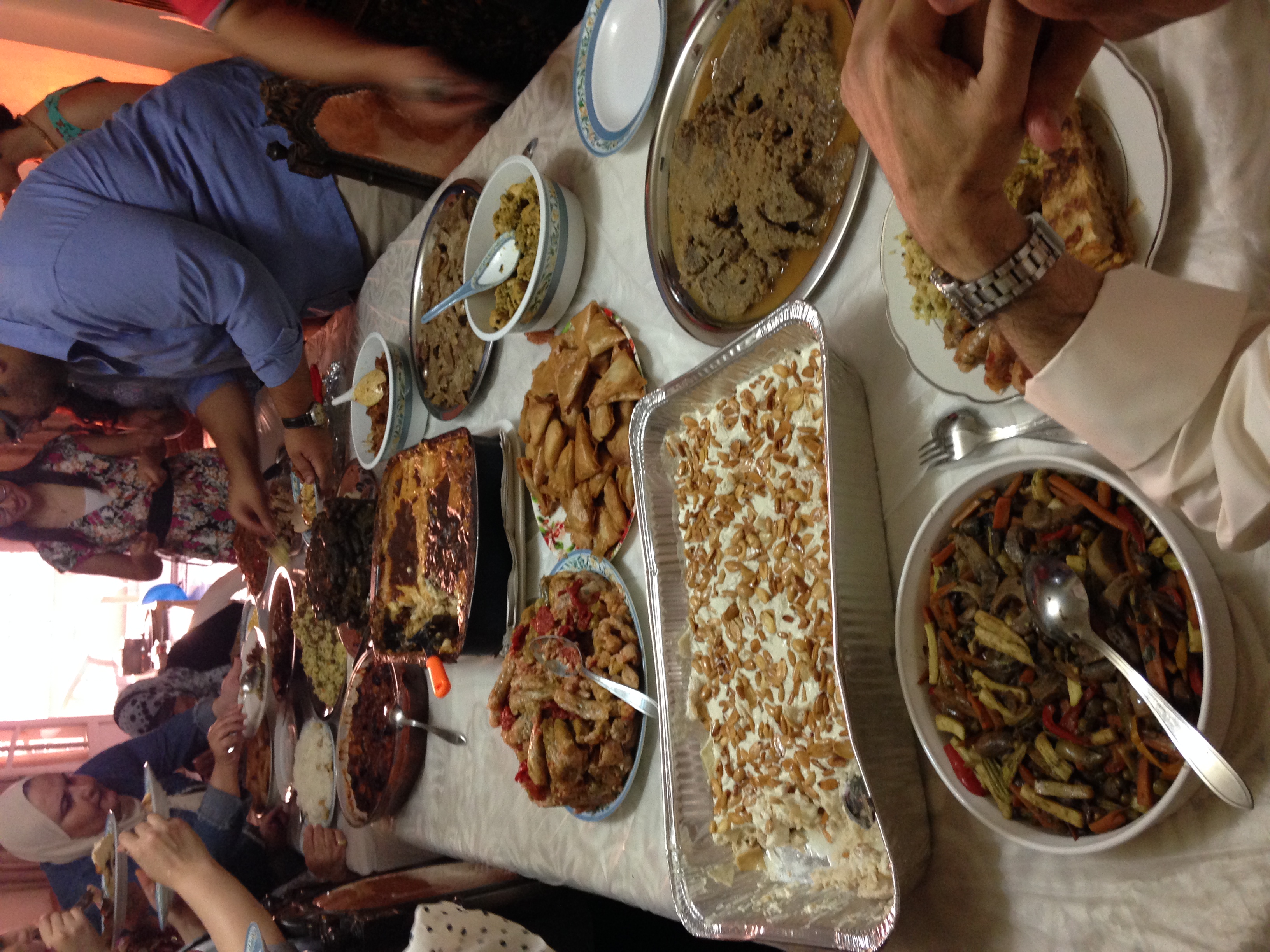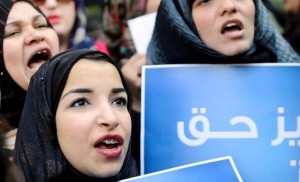Even though Arabic is the official language of the Middle East, and it is the fifth most commonly spoken language worldwide, each Arabic country has its own unique dialect and style of pronouncing the language.
There are 26 countries worldwide which have Arabic as the main language, with 10 of these speaking the language alongside another, Morocco, Tunisia, Lebanon, French is fluently spoken alongside Arabic. In Iraq, people speak Kurdish as fluently as Arabic.
Although the Arabic language consists of the same alphabets and words, the way it is used in forming sentences in each region might be hard to understand from one dialect to another, even a small word such as “Hello” differs from the Gulf countries to the Levant than Morocco and Tunisia.
Yet, there are a few dialects that are understood by most people living in the Arab region including Egyptian, Syrian and Lebanese accents, due to the popularity of TV shows in these languages.
The differences in languages are often not mainly in the words themselves, but in the grammatical inflections used before or after words.
After the Arab expansion and spread of Islam in the Middle East, which started in the seventh century, Arabic spread across the region. Egyptians were aware of the Arabic language and spoke it even before it was an Islamic country due to trade with Arabs, but it started to be spoken fluently and became the country’s official language during the time of having the ”Fustat” period, the first capital of the country in the same century.

Food
George Bernard Shaw once said “there is no love sincerer than the love of food”, and the Arab world is the best region to apply this quote. The eating habits Arabs share is one of the things the makes them unique and special.
As a part of the culture, food is considered a way of showing love. A person shows others how much he honours their visit to his home by the amounts and the kinds of food he services them. Most of the time, welcoming people with food is related to generosity in people’s mind, based on what is culturally known as “the more people welcome you with food, the more generous they are”.
Most of what Arabs do a lot of the time revolves around eating; it is one of the required things in any outing in the Arab region, the main component in any gathering of family or friends, and a must in anything as small as a home film night with no one but yourself. Moreover, in some countries, such as Egypt and the Gulf, the measurement of a good wedding is related to the size, variety, quality and taste of the buffet it has.
As a part of the shared culture from the east to the west of the Arabian world, people have become nowadays expected to provide big and different quantities of food while inviting people over any celebration.
Considering food as a gift to bring people while giving them a visit, is not something you find around the world. It is an old habit that developed to reach having a certain kind of food given in certain occasions.
For instance, bringing a sick person 2kgs of oranges and bananas is a sign of pure love and care in Egypt, while in other Arab countries a box of chocolate is the biggest sign of wishing the person to “get well soon”.
Even though Arabs in different regions and countries mainly share the same culture and background, the way each one of them make their meals differ from one another even if they are made by the same kind of food.
Rice and meat are the most spread types of foods in the region. In the Gulf countries, they are steamed or boiled to produce a famous meal called “Kabsa”. While in Egypt, they are eaten aside a famous soup called “Molokhia” or the rice is combined with lentils producing the famous “Koshary”. As for the Maghreb countries, they are known with their ‘tajines’ that are put in ovens.
Also, some regions are famous for certain things. The Gulf countries are known with having the best kinds of dates, while Egypt is famous with the popular ‘foul and falafel’, as for the Maghreb countries they have a famous repetition in ‘couscous’. Eventually, they all eat the same food, each with a different recipe from their grandparents who produced the food with a different taste.
Family Traditions:
The traditions families have inherited over the years in Arab societies are one of a kind. Across Arab counties from east to west they are almost the same, especially that it is one of the things that specialises the region.
It is usually known that the family gathers every week over lunch or dinner, where they talk and discuss about their updates and planes. The gathering is often held at the grandparents’ house or “the big family home” as it is called. That helps in building the connection between family members and strengthening it.
Also, it’s required for all of the family members to gather and have their Iftar together the first day of Ramadan and pray Taraweh prayers. It’s also known that the happiness of Eid is not completed unless the children take the “Eideyah” (an amount of money given from older people to young children to brig sweets with) from their older relatives, and eat the famous biscuits specially made for the event while they are wearing their new clothes mainly bought to celebrate it.
Yet, there are some family traditions only certain societies are specialised with doing such as celebrating Easter in Egypt, with family gatherings in a garden over the famous meal “Feseekh” (type of herring fish), that is not widely spread in the Gulf countries nor the Levant.
The wedding ceremonies in Arab countries and Islamic one’s are unique and spectacular, starting with the dowry, which is an amount of money the groom gives the bride before getting married. In some countries like Libya, the dowry is measured with gold, while in others it is simply with money.
It’s usually known to have a henna party the night before the wedding, where the bride and her friends create designs on their hands with beautiful drawings with Henna, and spend their night dancing and celebrating.
In some countries like Morocco and Tunisia, henna is considered a form of optimism for the new life the girl is having and a good luck charm, while in other countries like Egypt, it’s just a way of prettifying the bride.
In the gulf countries and the Maghreb, at the Henna day, the groom sends a “Dofoo’”, which is a number of huge plates carrying different kinds of colourful clothes, shoes and perfumes.
While in Libya, the “Dofoo’ ” is given with camels, sheep and several food products like oil, tea, sugar, tomatoes and soap.
In Egypt, there’s a tradition called writing down “Ayma” (the list), which contains everything the bride and her family brought to the apartment and the amount of money the participated at the marriage with. That is for her to take them back again in case of divorce or if the groom passed away.
A big glamorous expensive wedding is a must at the region, the more expensive the weeding looks, the classier its owners appear.
In the past, the ceremonies of weddings at the region lasted for seven days of continuous celebration, while nowadays it turned to be just one day.
First thing in the morning, after the wedding night, it’s culturally known for the parents of the bride and the groom to go visit them at their home carrying the breakfast. But in some towns of Egypt, the family of the bride sends a feast to the groom’s family for lunch.

Women
Women in Arab societies once faced the same restrictions and violations over her rights and freedom, most of those restrictions were thought to be religiously-based, even if they are in reality the furthest thing from religious and culturally believed ones.
It’s almost impossible for any girl in the Arab region to live on her own without having any of her siblings living with her allegedly to protect her. That applies on the times she has to be back at home as well, if the woman is not obligated to stay out late in her work or at certain places, she has to be back home at curfews go from 8:00pm to 10:30pm, unless she has one of her siblings with her.
It’s also bad form for a girl to be found smoking shisha or cigarettes; however, this belief has started to change in some societies like Egypt, Maghreb and Lebanon.
But some Arab societies are more conservative than the others, like in Saudi Arabia, it’s restricted for women to drive or even to go out without wearing the ”Abbaya” (long black gown) or without any of their male siblings.
In Jordan, the law states that the man has the right to kill his wife in case of finding her cheating on him with another guy, and to be declared innocent. On the other, other societies like the Levant, Maghreb and Egypt, girls get their freedom in wearing whatever they want, and go out with whomever she likes.
Nowadays, the woman in Arab societies has the right to be will educated, well dressed and played a very strong role in the protests of the Arab spring. The woman is participating in almost every field of life, and playing a role as strong as the man in building the family.
There were a lot of Arabic plays and films which detected the conditions of the region. The gulf is famously known with having strong series about their conditions and social problems, so are the Syrians. But in the African region, Egypt produces strong films, plays and series to the whole region.
Some of the Art work detects the problems of the Arab as a whole, like the play “Seket El-Salama” of the famous actor Mohammed Sobhy, where he points at the Palestinian cause and how Egyptians act towards it. It was produced in 2000.
There’s also the film “El-Hodod” (“The Borders”), produced at 1982, which detected the tragedy of any Arab citizen travelling between the boarders of the Arab world countries.
In the 60’s, the international Egyptian director Youssef Shahin featured the Algerian struggle for independence in his film Gamile Abo-Hred. The film narrates the biography of Abo-Hred and her struggles against French colonialism
In the recent history, the collaboration between different Arab nationalities to produce good pieces of art has been spreading more. In terms of music, the 50s witnessed the famous operate “Watany Habiby” (“My beloved country”) sung by several prominent Arab artists. Afterwards at the late 90s, the famous operate “El-Helm El-Araby” (“The Arab’s dream”) was produced after the Second Intifada of Al-Aqsa.
They operate showed the deterioration caused by Israeli Occupation and the sufferings of the people on the hands of Israeli soldiers. Several artists from almost all the Arab region participated in it.






